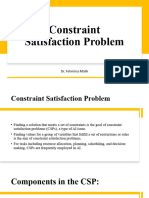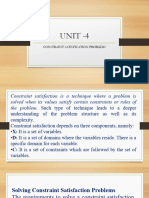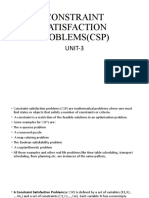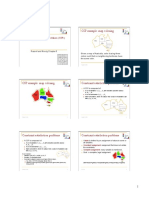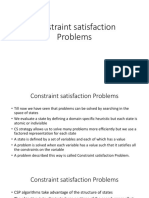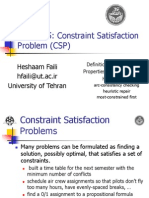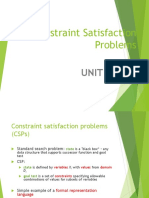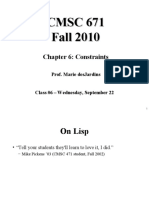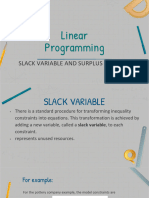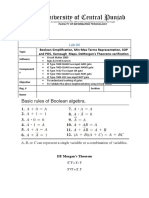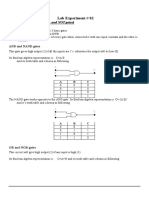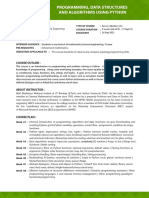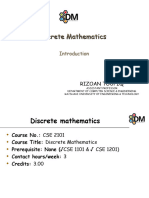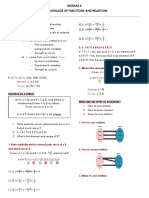0% found this document useful (0 votes)
125 views17 pagesConstraint Satisfaction Problems: Artificial Intelligence COSC-3112 Ms. Humaira Anwer
This document summarizes key topics from a lecture on constraint satisfaction problems (CSPs):
1. It discusses variations of the CSP formalism including different variable types (discrete, continuous) and constraint types (unary, binary, higher-order, global).
2. It explains how to convert n-ary constraints to binary constraints using auxiliary variables.
3. It covers inference techniques in CSPs called constraint propagation and local consistency methods (node, arc, path, k-consistency) to reduce variable domains.
4. Establishing strong k-consistency on a CSP can find a solution by sequentially assigning values that are consistent based on the constraint graph structure.
Uploaded by
MUHAMMAD ALICopyright
© © All Rights Reserved
We take content rights seriously. If you suspect this is your content, claim it here.
Available Formats
Download as PDF, TXT or read online on Scribd
0% found this document useful (0 votes)
125 views17 pagesConstraint Satisfaction Problems: Artificial Intelligence COSC-3112 Ms. Humaira Anwer
This document summarizes key topics from a lecture on constraint satisfaction problems (CSPs):
1. It discusses variations of the CSP formalism including different variable types (discrete, continuous) and constraint types (unary, binary, higher-order, global).
2. It explains how to convert n-ary constraints to binary constraints using auxiliary variables.
3. It covers inference techniques in CSPs called constraint propagation and local consistency methods (node, arc, path, k-consistency) to reduce variable domains.
4. Establishing strong k-consistency on a CSP can find a solution by sequentially assigning values that are consistent based on the constraint graph structure.
Uploaded by
MUHAMMAD ALICopyright
© © All Rights Reserved
We take content rights seriously. If you suspect this is your content, claim it here.
Available Formats
Download as PDF, TXT or read online on Scribd
/ 17

